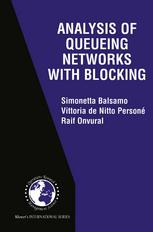

Most ebook files are in PDF format, so you can easily read them using various software such as Foxit Reader or directly on the Google Chrome browser.
Some ebook files are released by publishers in other formats such as .awz, .mobi, .epub, .fb2, etc. You may need to install specific software to read these formats on mobile/PC, such as Calibre.
Please read the tutorial at this link: https://ebookbell.com/faq
We offer FREE conversion to the popular formats you request; however, this may take some time. Therefore, right after payment, please email us, and we will try to provide the service as quickly as possible.
For some exceptional file formats or broken links (if any), please refrain from opening any disputes. Instead, email us first, and we will try to assist within a maximum of 6 hours.
EbookBell Team

4.4
32 reviewsQueueing network models have been widely applied as a powerful tool for modelling, performance evaluation, and prediction of discrete flow systems, such as computer systems, communication networks, production lines, and manufacturing systems. Queueing network models with finite capacity queues and blocking have been introduced and applied as even more realistic models of systems with finite capacity resources and with population constraints. In recent years, research in this field has grown rapidly. Analysis of Queueing Networks with Blocking introduces queueing network models with finite capacity and various types of blocking mechanisms. It gives a comprehensive definition of the analytical model underlying these blocking queueing networks. It surveys exact and approximate analytical solution methods and algorithms and their relevant properties. It also presents various application examples of queueing networks to model computer systems and communication networks.
This book is organized in three parts. Part I introduces queueing networks with blocking and various application examples. Part II deals with exact and approximate analysis of queueing networks with blocking and the condition under which the various techniques can be applied. Part III presents a review of various properties of networks with blocking, describing several equivalence properties both between networks with and without blocking and between different blocking types. Approximate solution methods for the buffer allocation problem are presented.